2018 School Spending Survey Report
The Savvy Librarian’s Night Table: Ten amazing titles guaranteed to bring you peace, prosperity, and happiness
 With so many choices and so many terrific nonfiction titles in the pipeline, picking the “right” read can be daunting. This year we offer a variety of choices: the future of books, the life of a great American photographer, jigsaw puzzles as a metaphor for life, the negative legacy of America’s positive thinking, a history of American book advertising, a life sustained by birding, the story of how a donated book and a creative mind can change an entire community, reflections on Buddhism and Christianity, some truly memorable food writing, and living life with Asperger’s. Looking for something to banish winter doldrums? Get busy. Read these!
With so many choices and so many terrific nonfiction titles in the pipeline, picking the “right” read can be daunting. This year we offer a variety of choices: the future of books, the life of a great American photographer, jigsaw puzzles as a metaphor for life, the negative legacy of America’s positive thinking, a history of American book advertising, a life sustained by birding, the story of how a donated book and a creative mind can change an entire community, reflections on Buddhism and Christianity, some truly memorable food writing, and living life with Asperger’s. Looking for something to banish winter doldrums? Get busy. Read these! 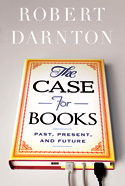 Darnton, Robert. The Case for Books: Past, Present, and Future. Public Affairs. $23.95. 9781-58648-826-0. It seems that almost daily some pundit is preparing to drive that last nail into the coffin of the printed book: school libraries are going all ebook, more academic library dollars are spent on electronic serials than on monographs, and the circulation of ebooks is growing geometrically. Darnton, a historian of the book and the current director of the Harvard University libraries, weighs in on the discussion with foresight and wisdom. In a lively collection of essays, he is a strong proponent of the intelligent use of digital methods to assure the vitality of and accessibility to scholarship, and the Harvard libraries are among the original Google libraries. Their early opt-in to the Google Books Project added both credibility and high-quality content to the mix, and Darnton argues for the advantages and advances the Web can offer readers even as he is cognizant of the roles that libraries have as enduring repositories for cultural history and creative writings. While Darnton eventually decided to gingerly embrace the Google settlement, he remains cautious and watchful. The Case for Books breaks through the babble about books and offers concerned and curious librarians an intelligent and balanced response to the anti-Google claque while assuring readers that, to paraphrase Mark Twain, the reports of the death of the book are greatly exaggerated.
Darnton, Robert. The Case for Books: Past, Present, and Future. Public Affairs. $23.95. 9781-58648-826-0. It seems that almost daily some pundit is preparing to drive that last nail into the coffin of the printed book: school libraries are going all ebook, more academic library dollars are spent on electronic serials than on monographs, and the circulation of ebooks is growing geometrically. Darnton, a historian of the book and the current director of the Harvard University libraries, weighs in on the discussion with foresight and wisdom. In a lively collection of essays, he is a strong proponent of the intelligent use of digital methods to assure the vitality of and accessibility to scholarship, and the Harvard libraries are among the original Google libraries. Their early opt-in to the Google Books Project added both credibility and high-quality content to the mix, and Darnton argues for the advantages and advances the Web can offer readers even as he is cognizant of the roles that libraries have as enduring repositories for cultural history and creative writings. While Darnton eventually decided to gingerly embrace the Google settlement, he remains cautious and watchful. The Case for Books breaks through the babble about books and offers concerned and curious librarians an intelligent and balanced response to the anti-Google claque while assuring readers that, to paraphrase Mark Twain, the reports of the death of the book are greatly exaggerated. 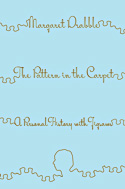 Drabble, Margaret. The Pattern in the Carpet: A Personal History with Jigsaws. Houghton. $25 ISBN 978-0-54724-144-9. Remembering that the best way to start a jigsaw puzzle is to carefully construct the outer frame, novelist Drabble uses the jigsaw as both object and organizing metaphor. Born into a family prone to depression, Drabble has often embraced jigsaws as a means of distraction, a familiar, repetitive activity that continues to offer solace, especially during the serious illness of her husband. However, jigsaws also serve as a springboard for Drabble’s imagination and memories. Despite the emphasis on sharp demarcations in early jigsaw puzzle design, those who expect a similar and straightforward linear read will not find one here. But those who enjoy the curvilinear and the associative will be both captivated and involved. Writing with perspective and forthrightness that may not have been possible at an earlier time in her life, this 70-year-old Dame Commander of the British Empire reminds us that, as in jigsaw solving, the entirety of one’s life is a puzzle that most often comes into clear focus toward the end of the process.
Drabble, Margaret. The Pattern in the Carpet: A Personal History with Jigsaws. Houghton. $25 ISBN 978-0-54724-144-9. Remembering that the best way to start a jigsaw puzzle is to carefully construct the outer frame, novelist Drabble uses the jigsaw as both object and organizing metaphor. Born into a family prone to depression, Drabble has often embraced jigsaws as a means of distraction, a familiar, repetitive activity that continues to offer solace, especially during the serious illness of her husband. However, jigsaws also serve as a springboard for Drabble’s imagination and memories. Despite the emphasis on sharp demarcations in early jigsaw puzzle design, those who expect a similar and straightforward linear read will not find one here. But those who enjoy the curvilinear and the associative will be both captivated and involved. Writing with perspective and forthrightness that may not have been possible at an earlier time in her life, this 70-year-old Dame Commander of the British Empire reminds us that, as in jigsaw solving, the entirety of one’s life is a puzzle that most often comes into clear focus toward the end of the process. 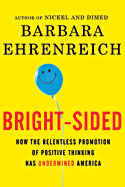 Ehrenreich, Barbara. Bright-Sided: How the Relentless Promotion of Positive Thinking Has Undermined America. Metropolitan. $23 ISBN 978-0-8050-8749-9. Ehrenreich’s first personal encounter with mandatory optimism occurred when she was diagnosed with breast cancer over eight years ago. Possessing a Ph.D. in cellular biology, she was stunned by the very unscientific and wholly unproven linking of survival with positive thinking and the cultivation of a cheery disposition. Ehrenreich, the strong-minded author of Nickel and Dimed: On (Not) Getting By in America (Metropolitan, 2001), sees this happy talk/happy face response extending well beyond the world of cancer patients. She also cautions that motivation is now a growth industry: speakers, posters, tapes, seminars, and best sellers abound. Corporations and nonprofits alike have rushed to embrace this false positivism even as they are offshoring jobs, downsizing the workforce, and cutting the pensions of workers. Ehrenreich traces the doctrine of American Exceptionalism, thoroughly embraced by 21st-century neoconservatives, to the dark roots of 19th-century American optimism, which coincided, unsurprisingly, with the rise of industrialization and the closing of the Western frontier. She also makes a provocative and strong case for linking the widespread prosperity movement with both the subprime mortgage explosion and Wall Street’s irrational exuberance. True believers will find this book enraging. Decide for yourself.
Ehrenreich, Barbara. Bright-Sided: How the Relentless Promotion of Positive Thinking Has Undermined America. Metropolitan. $23 ISBN 978-0-8050-8749-9. Ehrenreich’s first personal encounter with mandatory optimism occurred when she was diagnosed with breast cancer over eight years ago. Possessing a Ph.D. in cellular biology, she was stunned by the very unscientific and wholly unproven linking of survival with positive thinking and the cultivation of a cheery disposition. Ehrenreich, the strong-minded author of Nickel and Dimed: On (Not) Getting By in America (Metropolitan, 2001), sees this happy talk/happy face response extending well beyond the world of cancer patients. She also cautions that motivation is now a growth industry: speakers, posters, tapes, seminars, and best sellers abound. Corporations and nonprofits alike have rushed to embrace this false positivism even as they are offshoring jobs, downsizing the workforce, and cutting the pensions of workers. Ehrenreich traces the doctrine of American Exceptionalism, thoroughly embraced by 21st-century neoconservatives, to the dark roots of 19th-century American optimism, which coincided, unsurprisingly, with the rise of industrialization and the closing of the Western frontier. She also makes a provocative and strong case for linking the widespread prosperity movement with both the subprime mortgage explosion and Wall Street’s irrational exuberance. True believers will find this book enraging. Decide for yourself. 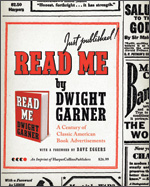 Garner, Dwight. Read Me: A Century of Classic American Book Advertisements. Foreword by Dave Eggers. HarperCollins/Ecco. $25.99. ISBN 978-0-06-157219-7. With America crazy for Mad Men, our fascination with vintage ads has been rekindled. A New York Times book critic, blogger, and the founding book editor for Salon, Garner has produced a wonderfully informed and clever “visual survey” of 100 years of American book publicity. “Plucked from yellowing newspapers, journals and magazines large and small,” this volume offers rare insights into the marketing of trade books and the developing of author and publisher brand names. Garner’s selections provide a secret history of America’s literary culture that seems both innocent and refreshingly straightforward in today’s world of bloggers and trendsetting tweets. Though the amazing ad reproductions are often the stars, this is far more than a coffee-table book. Garner’s contextual essays keyed to each decade evidence top-notch scholarship. Garner reminds us that advertising is really all about getting a book into “a potential reader’s line of sight,” something that remains “a long, difficult, sometimes anguished process” even today. Ironically, Read Me was essentially ignored by the library and the trade press reviewers, but don’t let that stop you. Read it!
Garner, Dwight. Read Me: A Century of Classic American Book Advertisements. Foreword by Dave Eggers. HarperCollins/Ecco. $25.99. ISBN 978-0-06-157219-7. With America crazy for Mad Men, our fascination with vintage ads has been rekindled. A New York Times book critic, blogger, and the founding book editor for Salon, Garner has produced a wonderfully informed and clever “visual survey” of 100 years of American book publicity. “Plucked from yellowing newspapers, journals and magazines large and small,” this volume offers rare insights into the marketing of trade books and the developing of author and publisher brand names. Garner’s selections provide a secret history of America’s literary culture that seems both innocent and refreshingly straightforward in today’s world of bloggers and trendsetting tweets. Though the amazing ad reproductions are often the stars, this is far more than a coffee-table book. Garner’s contextual essays keyed to each decade evidence top-notch scholarship. Garner reminds us that advertising is really all about getting a book into “a potential reader’s line of sight,” something that remains “a long, difficult, sometimes anguished process” even today. Ironically, Read Me was essentially ignored by the library and the trade press reviewers, but don’t let that stop you. Read it! 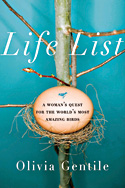 Gentile, Olivia. Life List: A Woman’s Quest for the World’s Most Amazing Birds. Illustrated with family photos and spot art by Rebecca Layton. Bloomsbury. $26. ISBN 978-1-59691-169-7. Cornell’s Ornithology Lab defines the Phoebe as “the most familiar flycatcher in eastern North America.” For world-class birders, the other, perhaps even more famous Phoebe is Phoebe Snetsinger. When she died at age 64, Snetsinger was eulogized in the New York Times as a woman who “Held Record for Bird Sightings”—over 8,400 birds worldwide. A mother of four and a Phi Beta Kappa from Swarthmore, Snetsinger was a failed initiate into postwar suburban America. A chronological and psychological contemporary of Betty Friedan, she was depressed, a sister-sufferer who grappled with “the problem that has no name.” Restless and challenged by the constraints of family life, she was given some terrifying news: she had an incurable disease and would have one year to live. Snetsinger, a neophyte yet dedicated birder, wrestled hope from that newfound passion. Funded by a considerable family inheritance and with the bewildered acquiescence of her husband and children, she embarked on a journey that would save her life: she transformed herself into a scientifically rigorous, ornithological detective. Yes, there were costs. While her income supported nine months of travel each year, she missed birthdays, a family Christmas, and her daughter’s wedding. Even the strongest of feminists will be both admiring and troubled by her single-minded pursuit and humbled by her prodigious achievement. Be sure to check out the animated film of the birds Phoebe sighted at www.oliviagentile.com.
Gentile, Olivia. Life List: A Woman’s Quest for the World’s Most Amazing Birds. Illustrated with family photos and spot art by Rebecca Layton. Bloomsbury. $26. ISBN 978-1-59691-169-7. Cornell’s Ornithology Lab defines the Phoebe as “the most familiar flycatcher in eastern North America.” For world-class birders, the other, perhaps even more famous Phoebe is Phoebe Snetsinger. When she died at age 64, Snetsinger was eulogized in the New York Times as a woman who “Held Record for Bird Sightings”—over 8,400 birds worldwide. A mother of four and a Phi Beta Kappa from Swarthmore, Snetsinger was a failed initiate into postwar suburban America. A chronological and psychological contemporary of Betty Friedan, she was depressed, a sister-sufferer who grappled with “the problem that has no name.” Restless and challenged by the constraints of family life, she was given some terrifying news: she had an incurable disease and would have one year to live. Snetsinger, a neophyte yet dedicated birder, wrestled hope from that newfound passion. Funded by a considerable family inheritance and with the bewildered acquiescence of her husband and children, she embarked on a journey that would save her life: she transformed herself into a scientifically rigorous, ornithological detective. Yes, there were costs. While her income supported nine months of travel each year, she missed birthdays, a family Christmas, and her daughter’s wedding. Even the strongest of feminists will be both admiring and troubled by her single-minded pursuit and humbled by her prodigious achievement. Be sure to check out the animated film of the birds Phoebe sighted at www.oliviagentile.com. 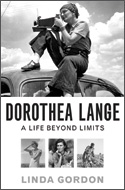 Gordon, Linda. Dorothea Lange: A Life Beyond Limits. Norton. $35. ISBN 978-0-393-05730-0. Lange’s iconic photo of a migrant mother and two of her towheaded children came to represent both the desperate poverty of Dust Bowl migrants and the stellar work of the Farm Security Administration’s (FSA) photographers. While criticism that the photo was posed, and not reportage, endures today, most agree that Lange almost singlehandedly transformed documentary photography. Lange (1895–1965) was the product of an unconventional New York City childhood that was complicated by indifferent parenting and a bout of polio. She eventually studied portrait photography, then left for San Francisco, where she established herself as portraitist to the Bay Area elite. She adopted a Bohemian lifestyle, replete with affairs, inconsistent child care (her two sons were often boarded out), left-leaning beliefs, and an appreciation of the arts. Though successful, she was ready to make a life change when she joined a troop of FSA photographers. Lange “turned toward the poor the same eye, flattering angles, and easy-to-read composition she had previously directed toward the rich.” The result was riveting. Gordon, an award-winning historian, has pulled together a minutely documented, yet truly approachable assessment of Lange and her legacy. Handsomely designed and amply illustrated, this biography transcends the facts to reveal the artist and proto-feminist visionary Gordon calls “America’s pre-eminent photographer of democracy.”
Gordon, Linda. Dorothea Lange: A Life Beyond Limits. Norton. $35. ISBN 978-0-393-05730-0. Lange’s iconic photo of a migrant mother and two of her towheaded children came to represent both the desperate poverty of Dust Bowl migrants and the stellar work of the Farm Security Administration’s (FSA) photographers. While criticism that the photo was posed, and not reportage, endures today, most agree that Lange almost singlehandedly transformed documentary photography. Lange (1895–1965) was the product of an unconventional New York City childhood that was complicated by indifferent parenting and a bout of polio. She eventually studied portrait photography, then left for San Francisco, where she established herself as portraitist to the Bay Area elite. She adopted a Bohemian lifestyle, replete with affairs, inconsistent child care (her two sons were often boarded out), left-leaning beliefs, and an appreciation of the arts. Though successful, she was ready to make a life change when she joined a troop of FSA photographers. Lange “turned toward the poor the same eye, flattering angles, and easy-to-read composition she had previously directed toward the rich.” The result was riveting. Gordon, an award-winning historian, has pulled together a minutely documented, yet truly approachable assessment of Lange and her legacy. Handsomely designed and amply illustrated, this biography transcends the facts to reveal the artist and proto-feminist visionary Gordon calls “America’s pre-eminent photographer of democracy.” 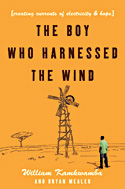 Kamkwamba, William and Bryan Mealer. The Boy Who Harnessed the Wind: Creating Currents of Electricity and Hope. William Morrow. $ 25.99. ISBN 978-0-061-73032-0. Do you ever wonder what happens to the thousands of used books that are shipped to Third World countries? William Kamkwamba, a 14-year-old Malawian boy discovered two special books in a USAID Library in his rural village. He was studying there because his struggling family, unsettled by cycles of drought, famine, and an unpredictable government, was unable to afford the school fees. Kamkwamba became so enthralled by two McGraw-Hill science textbooks that he decided to make a windmill of his own. Using scrounged scrap metal, a tractor fan, ball bearings from a junked grinder, and poles from blue gum trees, William made a magetsi a mphepo, or a windmill, in the family’s yard, which succeeded in powering four light bulbs and two radios. He went on to use the windmill to draw water from a well, and eventually the entire community was able to recharge their cell phones. Pleasingly scientific, this is a genuine and involving tale of tireless experimentation and self-reliance. Eventually identified as a homegrown innovator by TED, the influential nonprofit devoted to “Ideas Worth Spreading,” Kamkwamba is now a full-time student and blogger, while his book earnings help support Moving Windmills, a nonprofit group that supports sustainable development in his small village. Who says books can’t change the world?
Kamkwamba, William and Bryan Mealer. The Boy Who Harnessed the Wind: Creating Currents of Electricity and Hope. William Morrow. $ 25.99. ISBN 978-0-061-73032-0. Do you ever wonder what happens to the thousands of used books that are shipped to Third World countries? William Kamkwamba, a 14-year-old Malawian boy discovered two special books in a USAID Library in his rural village. He was studying there because his struggling family, unsettled by cycles of drought, famine, and an unpredictable government, was unable to afford the school fees. Kamkwamba became so enthralled by two McGraw-Hill science textbooks that he decided to make a windmill of his own. Using scrounged scrap metal, a tractor fan, ball bearings from a junked grinder, and poles from blue gum trees, William made a magetsi a mphepo, or a windmill, in the family’s yard, which succeeded in powering four light bulbs and two radios. He went on to use the windmill to draw water from a well, and eventually the entire community was able to recharge their cell phones. Pleasingly scientific, this is a genuine and involving tale of tireless experimentation and self-reliance. Eventually identified as a homegrown innovator by TED, the influential nonprofit devoted to “Ideas Worth Spreading,” Kamkwamba is now a full-time student and blogger, while his book earnings help support Moving Windmills, a nonprofit group that supports sustainable development in his small village. Who says books can’t change the world? 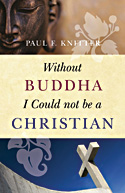 Knitter, Paul. Without Buddha I Could Not Be a Christian. Oneworld. $22.95. ISBN 978-1-85168-673-5. Knitter, a professor at Union Theological Seminary in New York, shares his own journey from Catholic priesthood to lay theologian to a practicing Christian/Buddhist even as he meditates on the value and conflicts inherent in “double belonging.” Interweaving interreligious dialogue, comparative religion, and social ethics into a resonate whole, this is a frank and carefully measured integration of Knitter’s own Christology into a greater awareness of the many ways we can and do worship God. Knitter observes that one’s “religious identity and practice do bear striking similarities to a committed relationship such as marriage,” wondering if a professed and believing Christian who also practices Buddhist meditation is somehow “cheating on Jesus?” No, not cheating, but certainly a kind of “double belonging.” If Knitter embraces both modes of spiritual practice, is he endorsing some sort of spiritual promiscuity? Knitter asserts that this is, instead, a hybrid of multiple faiths and diverse practices. Today more and more Americans are living in interreligious families and communities. We, by extension, are therefore engaged in an interreligious relationship with God. In this brave new world, can a single spiritual practice be enough? After a lifetime of learning, Knitter concludes that, for him, the “only way… [to] be religious is by being interreligious.”
Knitter, Paul. Without Buddha I Could Not Be a Christian. Oneworld. $22.95. ISBN 978-1-85168-673-5. Knitter, a professor at Union Theological Seminary in New York, shares his own journey from Catholic priesthood to lay theologian to a practicing Christian/Buddhist even as he meditates on the value and conflicts inherent in “double belonging.” Interweaving interreligious dialogue, comparative religion, and social ethics into a resonate whole, this is a frank and carefully measured integration of Knitter’s own Christology into a greater awareness of the many ways we can and do worship God. Knitter observes that one’s “religious identity and practice do bear striking similarities to a committed relationship such as marriage,” wondering if a professed and believing Christian who also practices Buddhist meditation is somehow “cheating on Jesus?” No, not cheating, but certainly a kind of “double belonging.” If Knitter embraces both modes of spiritual practice, is he endorsing some sort of spiritual promiscuity? Knitter asserts that this is, instead, a hybrid of multiple faiths and diverse practices. Today more and more Americans are living in interreligious families and communities. We, by extension, are therefore engaged in an interreligious relationship with God. In this brave new world, can a single spiritual practice be enough? After a lifetime of learning, Knitter concludes that, for him, the “only way… [to] be religious is by being interreligious.” 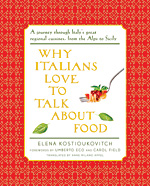 Kostioukovitch, Elena. Why Italians Love to Talk About Food. Translated by Anne Milano Appel. Forewords by Umberto Ecco and Carol Field. Farrar. $35. ISBN 978-0-374-28994-2. Described as “a journey through Italy’s great regional cuisines,” this unique book on food and culture has already become a best-seller in Italy and Russia. Kostioukovitch, a Martha Stewart look-alike with considerable literary chops, is a literary agent and renowned translator of the likes of Umberto Ecco. But why should any self-respecting American foodie bother with a 450-page book about Italian food without a single recipe in it? Because this is at once superb expository writing and brilliant gastronomy. In contrast to the red sauce, white tablecloth specialties of 21st-century Italian-American cookery, contemporary Italian cuisine is as diverse as the agricultural products and the artisanal specialties of each area. Part travelogue, part culinary history, this is a book of fascinating “stories about symbolic foods of each Italian region” and their seemingly infinite micro-cuisines. One can start reading almost anywhere in this astonishing book—only to discover your next Italian vacation spot, perhaps? In any case, don’t miss the essential sections on cooking methods, sauces, and the often mysterious (for non-Italian cooks) dos and don’ts of pasta pairings—the right shapes for the right sauce. Abundantly illustrated and handsomely designed with a strong sewn binding that rivals those of the best keepsake cookbooks, this is a new culinary classic.
Kostioukovitch, Elena. Why Italians Love to Talk About Food. Translated by Anne Milano Appel. Forewords by Umberto Ecco and Carol Field. Farrar. $35. ISBN 978-0-374-28994-2. Described as “a journey through Italy’s great regional cuisines,” this unique book on food and culture has already become a best-seller in Italy and Russia. Kostioukovitch, a Martha Stewart look-alike with considerable literary chops, is a literary agent and renowned translator of the likes of Umberto Ecco. But why should any self-respecting American foodie bother with a 450-page book about Italian food without a single recipe in it? Because this is at once superb expository writing and brilliant gastronomy. In contrast to the red sauce, white tablecloth specialties of 21st-century Italian-American cookery, contemporary Italian cuisine is as diverse as the agricultural products and the artisanal specialties of each area. Part travelogue, part culinary history, this is a book of fascinating “stories about symbolic foods of each Italian region” and their seemingly infinite micro-cuisines. One can start reading almost anywhere in this astonishing book—only to discover your next Italian vacation spot, perhaps? In any case, don’t miss the essential sections on cooking methods, sauces, and the often mysterious (for non-Italian cooks) dos and don’ts of pasta pairings—the right shapes for the right sauce. Abundantly illustrated and handsomely designed with a strong sewn binding that rivals those of the best keepsake cookbooks, this is a new culinary classic. 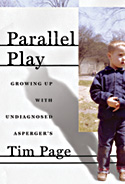 Page, Tim. Parallel Play: Growing Up with Undiagnosed Asperger’s. Doubleday. $26. ISBN 978-0-385-52562-6. Page, a composer, biographer, and winner of the 1997 Pulitzer Prize for music writing, turns his critical eye on himself, forthrightly exploring his own life, most notable for its “restless isolation.” As a person with Asperger’s (an autism spectrum disorder), he’d always felt “not quite a mammal.” Page observes: “In the years since the phrase became a cliché, I have received any number of compliments for my supposed ability to 'think outside the box.’” As for that mythical box, Page has never been able to suss out those thought patterns and social behaviors that comfortably position others firmly inside it. He describes a childhood rife with classic serial obsessions; the pursuit of unusual, obscure knowledge; and a complete inability to conform to expectations. He was savant-like, a brilliant child with loving, though mystified parents. A college professor, his father tried to nurture his gifts and minimize his failures. Asperger’s has brought Page pain and isolation, although it may have facilitated his success in the rarefied world of the New Music scene. Life has been a long, strange trip for Page. But his relatively recent diagnosis has offered clarity and a measure of peace: “And if I am still something of a stranger in this world, a predestined outsider, I remain profoundly grateful for my life and its fitful and mysterious spell of invisible joy.”
Page, Tim. Parallel Play: Growing Up with Undiagnosed Asperger’s. Doubleday. $26. ISBN 978-0-385-52562-6. Page, a composer, biographer, and winner of the 1997 Pulitzer Prize for music writing, turns his critical eye on himself, forthrightly exploring his own life, most notable for its “restless isolation.” As a person with Asperger’s (an autism spectrum disorder), he’d always felt “not quite a mammal.” Page observes: “In the years since the phrase became a cliché, I have received any number of compliments for my supposed ability to 'think outside the box.’” As for that mythical box, Page has never been able to suss out those thought patterns and social behaviors that comfortably position others firmly inside it. He describes a childhood rife with classic serial obsessions; the pursuit of unusual, obscure knowledge; and a complete inability to conform to expectations. He was savant-like, a brilliant child with loving, though mystified parents. A college professor, his father tried to nurture his gifts and minimize his failures. Asperger’s has brought Page pain and isolation, although it may have facilitated his success in the rarefied world of the New Music scene. Life has been a long, strange trip for Page. But his relatively recent diagnosis has offered clarity and a measure of peace: “And if I am still something of a stranger in this world, a predestined outsider, I remain profoundly grateful for my life and its fitful and mysterious spell of invisible joy.” After 25 years of developing collections for public libraries, Barbara Genco (bagencoconsulting@gmail.com) recently joined Library Journal as its new collection management editor.
RELATED
RECOMMENDED
CAREERS
The job outlook in 2030: Librarians will be in demand
CAREERS
The job outlook in 2030: Librarians will be in demand
ALREADY A SUBSCRIBER? LOG IN
We are currently offering this content for free. Sign up now to activate your personal profile, where you can save articles for future viewing






Add Comment :-
Be the first reader to comment.
Comment Policy:
Comment should not be empty !!!